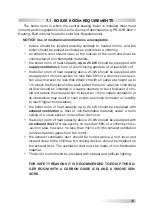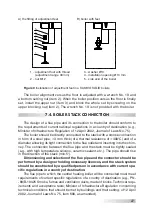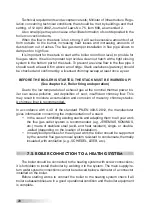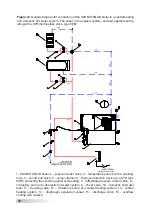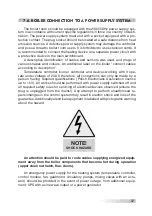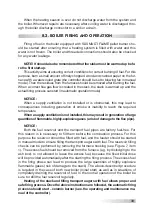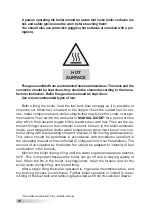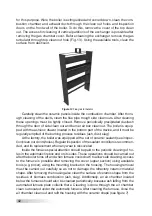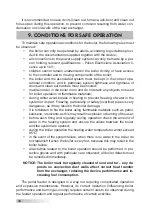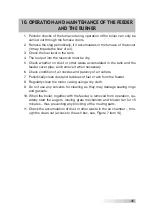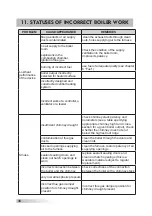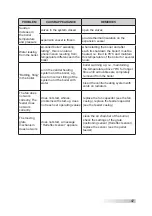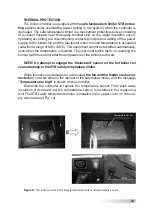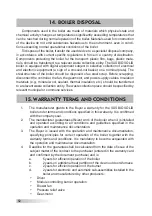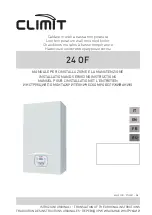
38
NOTE!
Before starting operation an experienced installer should train the user in
rules for operation and maintenance of the boiler and the whole heating
system. A person operating the boiler should be acquainted with statu-
ses of the incorrect device operation and with procedures for dangerous
situations.
8.1. FILLING WITH WATER
Before the first start-up of the boiler, the water tightness test of the whole heating
system should be performed. Before the tightness test is started, the whole system
should be effectively rinsed with water to remove any possible contaminations which
could affect the boiler operation.
Water used to fill the boiler and the heating system should be clean, free of ag-
gressive chemical compounds or oil, and meet requirements of current regulations
(PN-C-04607:1993 Water in heating systems – Requirements and tests concerning
water quality).
Water for filling of the system should meet the following requirements:
• pH: 8.0÷9.0 – in a copper system or systems of combined materials steel/
copper; 8.0÷9.5 – in a system of steel and cast iron; 8.0÷8.5 – in a system
with aluminium radiators.
• total water hardness
≤
4 mval/l (11.2°dH /German degrees/).
• free oxygen content
≤
0.1 mg O2/l
Temporary hardness caused by hydrogen carbonates that are thermally unstable
and when heated are transformed into water-insoluble carbonates deposited as lime-
scale. Some of limescale is deposited on the system components and some on the
boiler components, mainly the exchanger. Limescale has very good thermal insula-
tion properties, reducing heat absorption by boiler water and resulting in overheating
of the exchanger and, in consequence, in its destruction.
The boiler and the whole system should be filled with water through the boiler
discharge connector. This operation should be conducted slowly, to ensure the air is
removed from the system. The system is completely filled when water flows out from
the overflow pipe (in an open vented system).
When the central heating system is filled with water, it is recommended to loosen
screws at the connection between the boiler and the system (at the hot water connec-
tor). When water flows out, tighten the screws.
The open vented heating system is in a direct contact with air, resulting in water
evaporation and a need to replenish it.
NOTICE: It is forbidden and unacceptable to replenish water in the event of
the system failure – when there is no water in the boiler and the boiler is very
hot, because this may result in damage or cracks!
8. GUIDELINES FOR USE AND OPERATION


